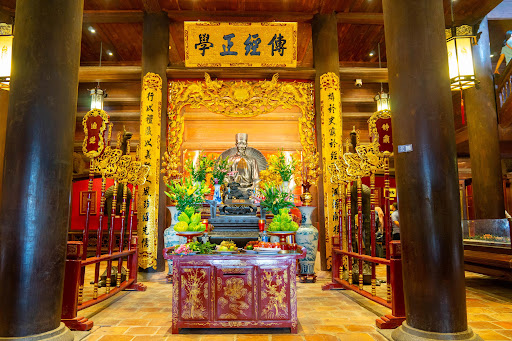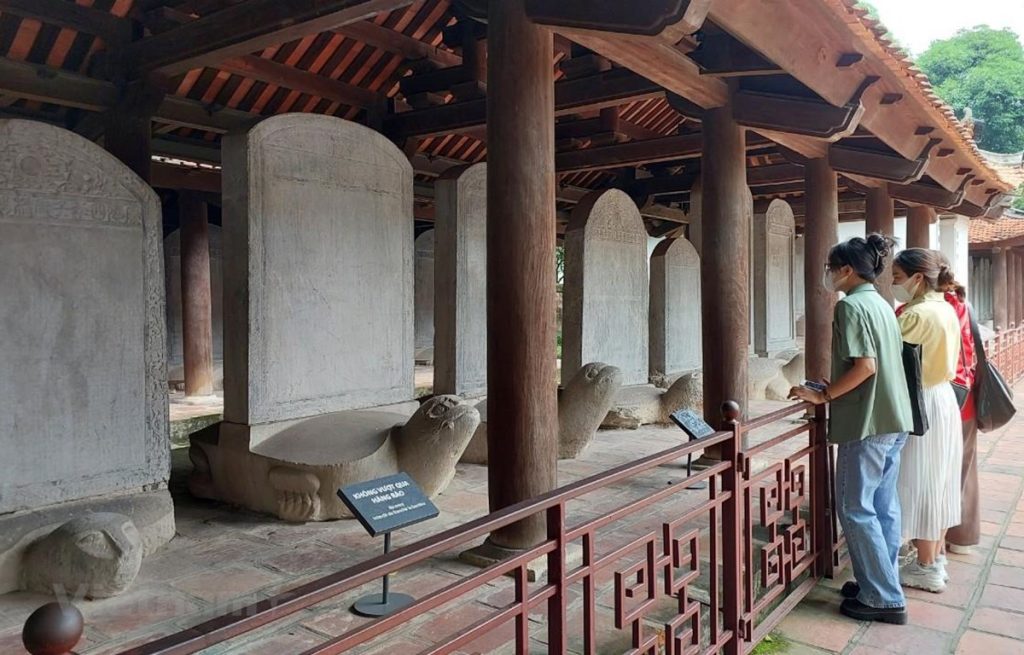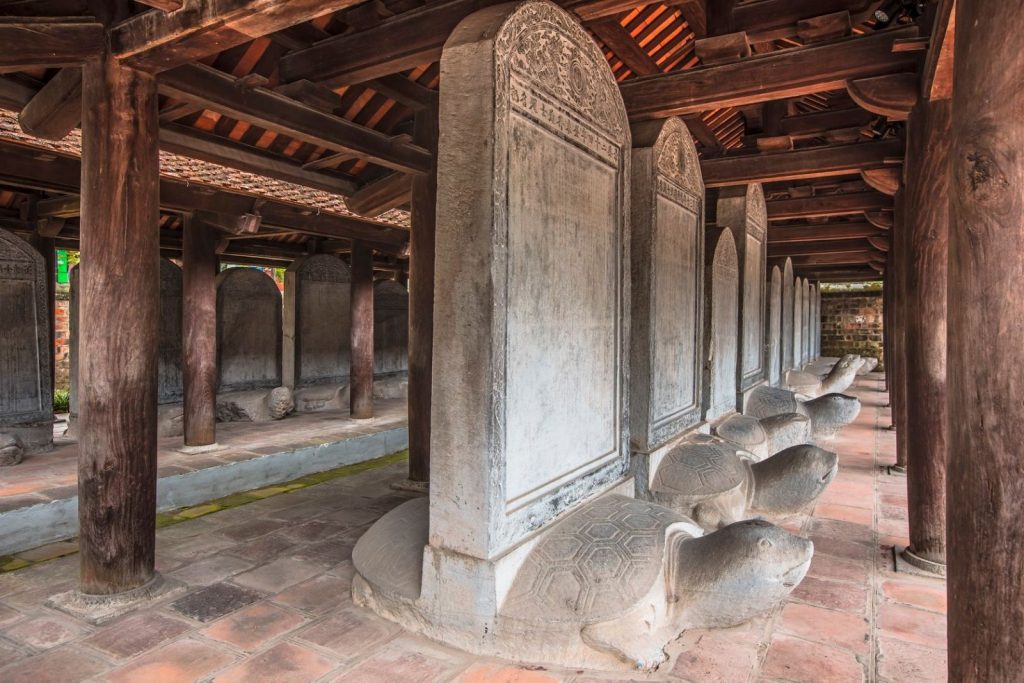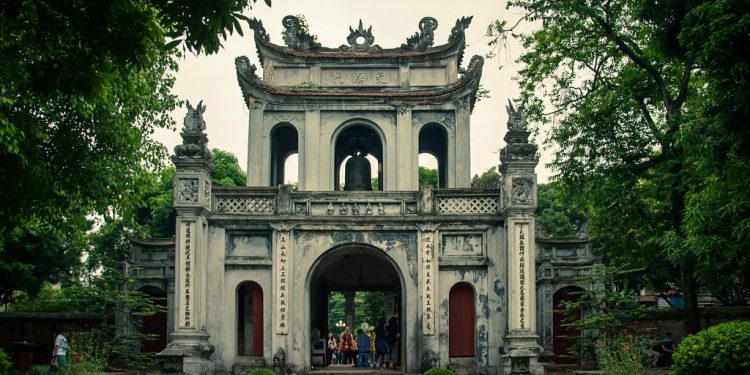The Temple of Literature – Quoc Tu Giam (Văn Miếu – Quốc Tử Giám) is one of the most significant historical and cultural landmarks in Hanoi, Vietnam. Established in 1070, it served as Vietnam’s first national university and remains a testament to the country’s rich educational traditions and reverence for knowledge. This ancient site honors Confucius and generations of scholars, standing as a symbol of intellectual excellence and cultural heritage.
History and Development
The Temple of Literature was built in 1070 under the reign of Emperor Ly Thanh Tong as a place to worship Confucius, sages, and scholars. Six years later, in 1076, Quoc Tu Giam, the Imperial Academy, was founded, becoming the first university in Vietnam. It was initially reserved for royal family members and later opened to exceptional students from across the country.
Throughout the dynasties of Ly, Tran, Le, and Nguyen, the Temple of Literature played a pivotal role in educating the nation’s elite. Many significant imperial examinations were held here, selecting the most talented individuals to serve the royal court.
Despite facing wars and natural disasters, the Temple of Literature has been well-preserved and restored over the centuries, maintaining its historical significance and cultural value.

Unique Architecture
The Temple of Literature showcases traditional Vietnamese architecture deeply influenced by Confucian principles. The complex is divided into five courtyards aligned along a north-south axis, each representing a different aspect of the educational journey.
- Lake of Literature (Ho Van): Situated in front of the main entrance, this tranquil lake adds harmony to the surroundings.
- Great Middle Gate (Dai Trung Mon): The main gate leads visitors into the inner courtyards, symbolizing the entrance into the realm of knowledge.
- Constellation of Literature Pavilion (Khue Van Cac): Built in 1805, this iconic two-story structure represents the beauty of literature and is now a symbol of Hanoi.
- Stelae of Doctors: One of the most significant features of the Temple, these 82 stone stelae sit atop stone turtles and record the names of scholars who passed the royal examinations from 1442 to 1779. This collection has been recognized by UNESCO as part of the Memory of the World Program.
- Temple of Confucius and Imperial Academy: The final courtyard contains the main temple dedicated to Confucius and his disciples, as well as the historical site of Quoc Tu Giam where students once studied.
Cultural and Educational Significance
The Temple of Literature is more than just an architectural marvel; it embodies Vietnam’s deep respect for education and scholarly achievement.
- Symbol of Academic Excellence: For centuries, it was the highest educational institution in Vietnam, nurturing future mandarins and scholars.
- UNESCO-Recognized Heritage: The stelae of doctors not only honor the nation’s academic elite but also provide valuable insights into Vietnam’s educational history.
- A Place of Inspiration: Today, students often visit the Temple to seek blessings for academic success, especially during exam seasons. The site also hosts ceremonial events such as the calligraphy festival during the Lunar New Year.

The Temple of Literature Today
Now a major tourist attraction, the Temple of Literature welcomes millions of visitors each year, both local and international. It serves as a peaceful oasis in the heart of Hanoi, where guests can explore the rich cultural heritage of Vietnam.
- Cultural Events and Festivals: The site regularly hosts events like the Lunar New Year Calligraphy Festival and traditional music performances.
- Educational Programs: Schools often organize field trips to the Temple, fostering a sense of pride in Vietnam’s educational legacy among younger generations.
- A Photographic Hotspot: The Temple’s beautiful gardens, ancient architecture, and tranquil atmosphere make it a popular spot for photography, especially for graduates in their traditional attire.

Visiting the Temple of Literature
- Opening Hours: The Temple is open daily from 8:00 AM to 5:00 PM.
- Entrance Fee: Tickets are reasonably priced, with discounts available for students and children.
- Location: Situated at 58 Quoc Tu Giam Street, Dong Da District, Hanoi, the Temple is easily accessible by taxi, motorbike, or public transport.
- Visitor Tips:
- Dress modestly, especially when entering worship areas.
- Maintain a respectful demeanor and avoid loud noises.
- Hire a local guide to fully appreciate the historical significance of the site.

Conclusion
The Temple of Literature – Quoc Tu Giam stands as a timeless monument to Vietnam’s dedication to knowledge and education. Its serene courtyards, ancient stelae, and rich history offer a unique glimpse into the country’s scholarly traditions. A visit to this iconic landmark is not only a journey through history but also an opportunity to experience the soul of Vietnamese culture.
Whether you’re a history enthusiast, a cultural explorer, or simply seeking a peaceful retreat in bustling Hanoi, the Temple of Literature is a must-visit destination that beautifully encapsulates the spirit of Vietnam.








Discussion about this post